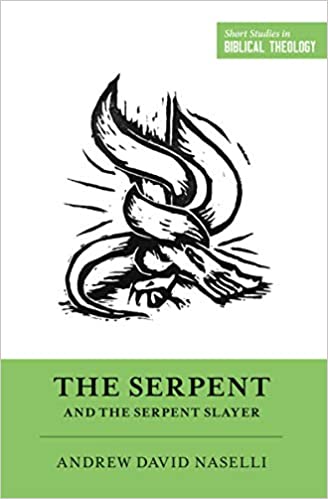A Brief Book Summary from Books At a Glance
By Kirsten Birkett
About the Author
Andrew David Naselli is Associate Professor of Systematic Theology and New Testament for Bethlehem College & Seminary in Minneapolis. He is also one of the pastors of Bethlehem Baptist Church..
Overview
This short and easy-to-read book presents a biblical theology of serpents. The devil is portrayed in the Bible as a serpent, a snake or a dragon, who is the enemy of God and tries to take God’s people away from him. As a serpent, the chief tactic is deception, and as a dragon, the chief tactic is devouring. This symbolism is followed through the Bible, as the devil tries both to deceive and devour God’s people. God sends his son Jesus, the ultimate-dragon slayer, who successfully defeats the devil; God’s people are also instructed in how to resist the serpent, until the end times when it will be finally done away with.
Table of Contents
Introduction: Why We Love DragonSlaying Stories
1 The Deceitful Snake in Genesis 3
2 Snakes and Dragons between the Bible’s Bookends—Part 1: The Good, the Bad, and the Ultimate Serpent
3 Snakes and Dragons between the Bible’s Bookends—Part 2: Six Offspring of the Serpent
4 The Devouring Dragon in Revelation 12 and 20
Conclusion: Living in Light of the Story of the Serpent and the Serpent Slayer
Appendix: How Often Does the Bible Explicitly Mention Serpents?
General Index
Scripture Index
Summary
Preface
The book assumes three beliefs:
- The Bible is God-breathed, entirely true, and our final authority
- All parts of the Bible are to be read in light of the whole.
- Biblical theology is a fruitful way of doing that.
Introduction
Why we love dragon-slaying stories
The greatest dragon-slaying story is that of the Bible, which is why we love all other stories that echo this theme. The dragon of the story is Satan, the damsel in distress is the people of God, and the serpent slayer is Jesus himself. “Serpent” (drakon) refers to both snakes and dragons, and the serpent’s strategies are to deceive (as a snake) and devour (as a dragon).
[To continue reading this summary, please see below....]The remainder of this article is premium content. Become a member to continue reading.
Already have an account? Sign In
